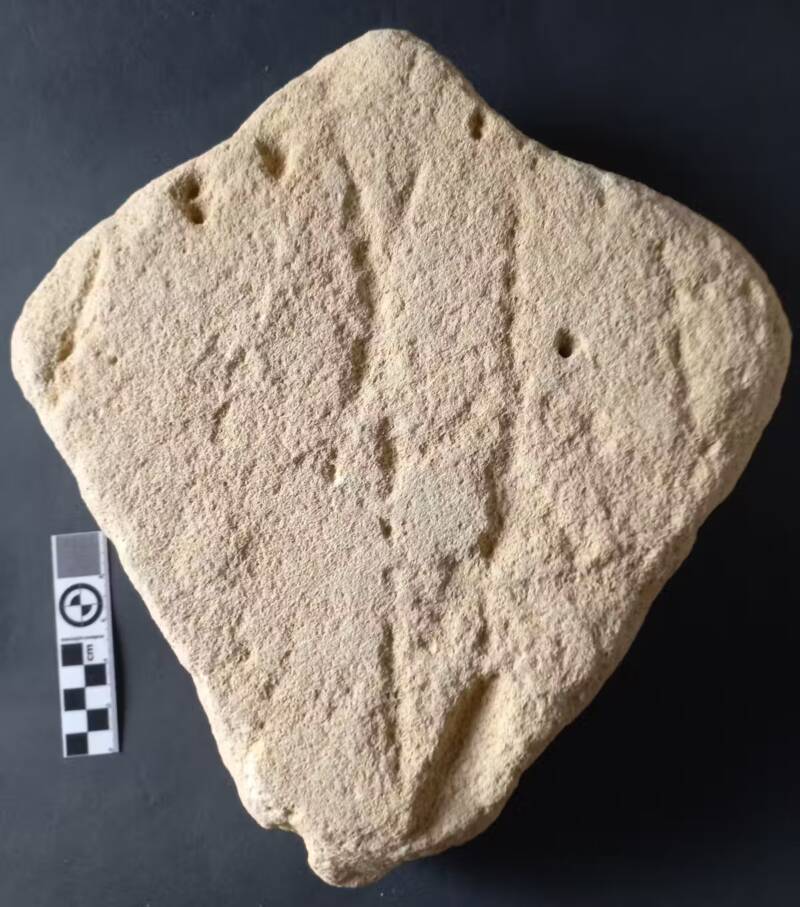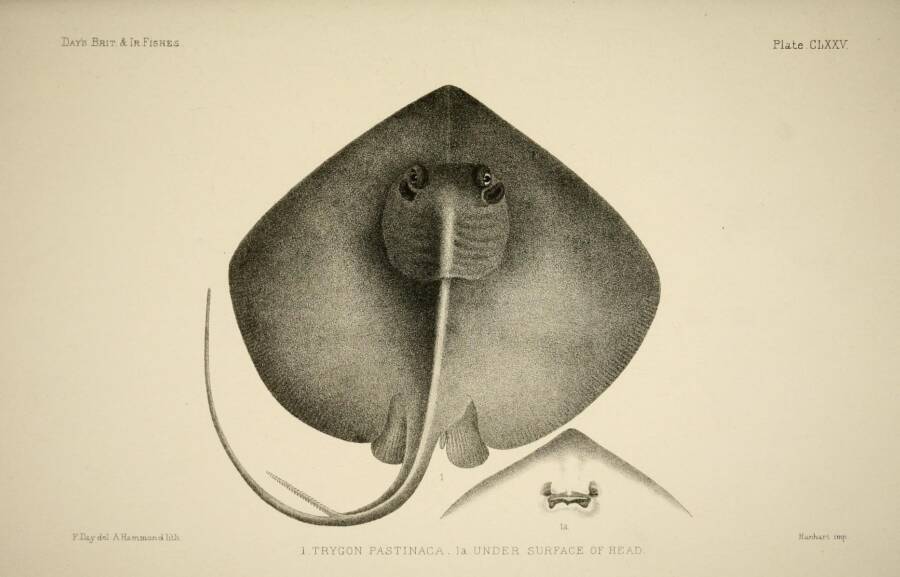If this ancient stone stingray truly is 130,000-year-old sand art, it would predate all other known animal art by 90,000 years.

Jan De VynckThe ancient “sculpture” made in sand possibly depicting a stingray.
In 2018, a “citizen scientist” discovered a unique, symmetrical rock near Still Bay, South Africa. Upon closer inspection, the stone looked surprisingly similar to a stingray without its tail.
After a thorough study, a group of researchers has now published an academic article in the journal Rock Art Research in which they identify the rock as an ancient “sand sculpture” depicting a stingray — and it may be the world’s oldest animal art.
The ‘Near-Perfect Outline’ Of A Stingray
Study co-authors Charles Helm, a paleontologist at Nelson Mandela University, and Alan Whitfield, the Emeritus Chief Scientist at the South African Institute for Aquatic Biodiversity, wrote in The Conversation, “We posit that it represents a sand-sculpture of a blue stingray (Dasyatis chrysonota). We believe that the sculpture might have begun with tracing a specimen in the sand.”
The authors make it clear that they used language like “posit” and “believe” because “we cannot prove our interpretation, and others cannot falsify it. It therefore represents speculation — although it is highly informed speculation based on our understanding of many tens of thousands of such rocks.”
That said, if their findings are accurate, they would provide some fascinating key information about ancient life.
Based on this discovery, it seems that humans were making sculptures in the sand as far back as 130,000 years ago. It would also mark the oldest known example of animal art, and it could show how humans used tracing to develop artistic abilities that possibly influenced later cave art.
It should also be noted that the researchers did not date the stone directly, as that would have required them to take “a large chunk” out of it. Instead, they used optically stimulated luminescence to date nearby rocks, which placed them in the Middle Stone Age roughly 130,000 years ago.

Biodiversity Heritage Library/Wikimedia CommonsA drawing of Dasyatis chrysonota.
The sculpture itself, according to the authors, has a “near-perfect outline and proportions” when compared to a blue stingray. There is even evidence of a stub where a tail may have been — which the authors believe was intentionally “amputated” when the sculpture was made.
Based on their observations, scientists contend that the artist was either “phenomenally gifted in recording such detail or that the image was traced.” In the latter case, the blue stingray was likely a male or a small immature female.
A ‘Stepping Stone’ To More Complex Art
Amazingly, this sculpture — if it is indeed one — would have been created a staggering 90,000 years earlier than western European rock art on cave walls. Up until now, it seemed almost as if much of that primitive rock art had emerged out of nowhere, but if earlier works of art had been made in the sand, it might explain why they did not survive throughout the millennia.
The authors suggested that sand tracings might have then served as a “stepping stone” of sorts between the very first lines drawn in the sand and representative rock art.
“We have tentatively suggested a sequence of progression of representational palaeoart from initial tracing in sand, to the creation of images in sand (through copying or from memory), and then to rock art,” they wrote.
If correct, this would show that humans were creating art of other species long before previously believed. It would also help to explain the seemingly sudden emergence of art found on the cave walls of Eurasia.
It may be difficult to prove, though, as the authors wrote, “Ancient palaeoart is rare in the archaeological record, and may be harder to recognize than more recent art: we really don’t know how much we don’t know.”
After reading about this remarkable discovery of a 130,000-year-old depiction of a stingray, read about the god Kokopelli, who often made appearances on the walls of caves. Or, see these 29 reconstructed faces of ancient humans, from Neanderthals to Jesus.





